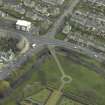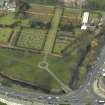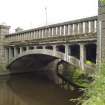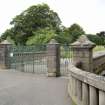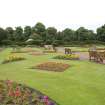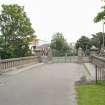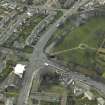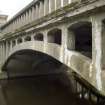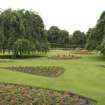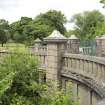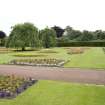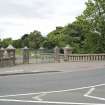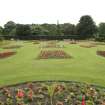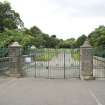Pricing Change
New pricing for orders of material from this site will come into place shortly. Charges for supply of digital images, digitisation on demand, prints and licensing will be altered.
Edinburgh, Saughton Park, Gorgie Road Bridge
Road Bridge (20th Century)
Site Name Edinburgh, Saughton Park, Gorgie Road Bridge
Classification Road Bridge (20th Century)
Alternative Name(s) Water Of Leith; Balgreen Road
Canmore ID 278826
Site Number NT27SW 234.01
NGR NT 22254 71864
Datum OSGB36 - NGR
Permalink http://canmore.org.uk/site/278826
- Council Edinburgh, City Of
- Parish Edinburgh (Edinburgh, City Of)
- Former Region Lothian
- Former District City Of Edinburgh
- Former County Midlothian
NT27SW 234.01 22254 71864
(Edinburgh, Saughton Park). Bridge over the Water of Leith, by Robert Morham, 1908.
J Gifford, C McWilliam and D Walker 1984.
This bridge carries the short entrance-drive into Saughton Public Park (NT27SW 234.00) from the SE across the Water of Leith. It opens onto the junction of Gorgie and Balgreen Roads.
Information from RCAHMS (RICM), 13 February 2006.
Construction (1907)
Mouchel - Hennebique concrete construction system
Project (2007)
This project was undertaken to input site information listed in 'Civil engineering heritage: Scotland - Lowlands and Borders' by R Paxton and J Shipway, 2007.
Publication Account (2007)
This structure is a good example of a Mouchel-Hennebique ferro-concrete bridge and probably the earliest surviving in Scotland. It gives access to Saughton Park site of the exhibition of 1907 for which it was erected. It crosses the Water of Leith from Gorgie Road with a span of 30 ft and was erected in 1907 under the direction of George Morham, City Architect. Apart from some spalling of the cover reinforcement the bridge is surviving well. over reinforcement the bridge is surviving well.
About a half mile upstream of Saughton was the threespan masonry arch bridge cited by Smiles and Boucher as Rennie’s first, built in 1784, but in fact designed by Alexander Stevens in 1783. Rennie, based at East Linton at the time, was probably aware of the project.
R Paxton and J Shipway 2007
Reproduced from 'Civil Engineering heritage: Scotland - Lowlands and Borders' with kind permission of Thomas Telford Publishers.





















